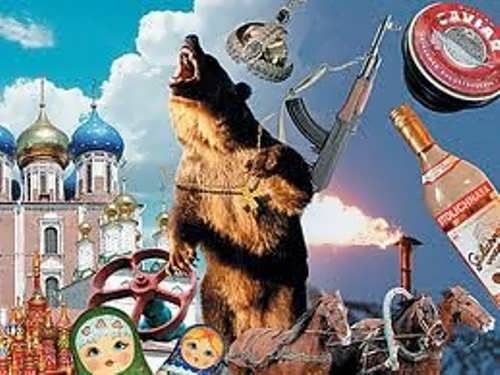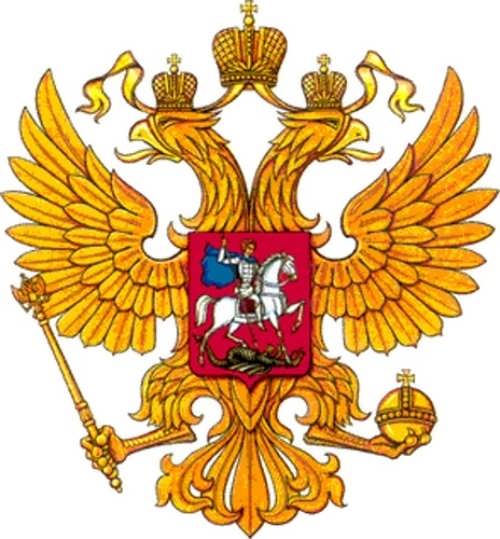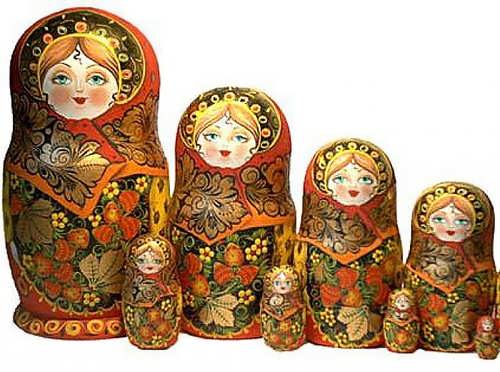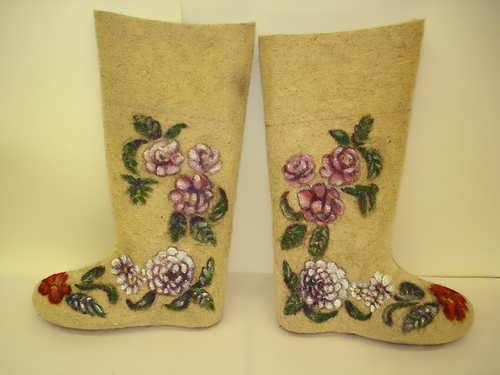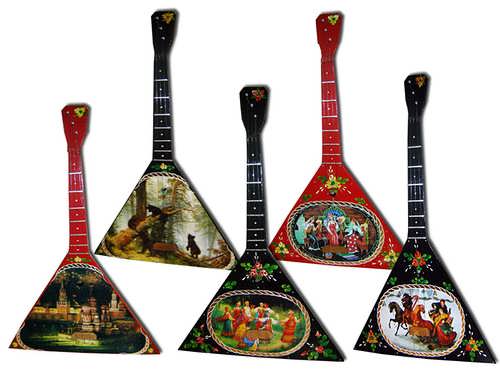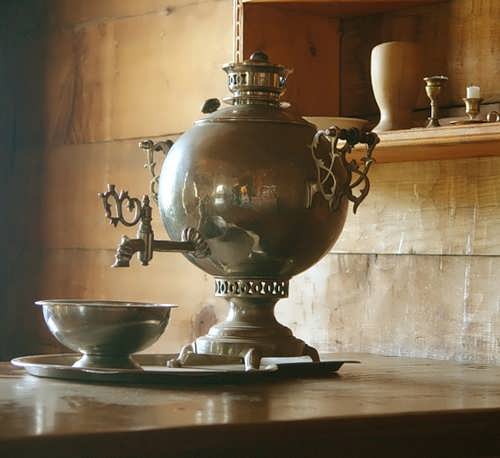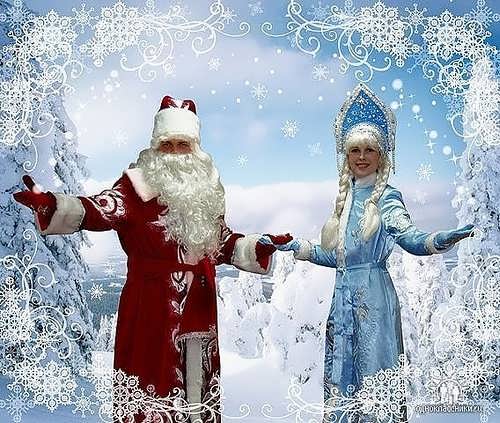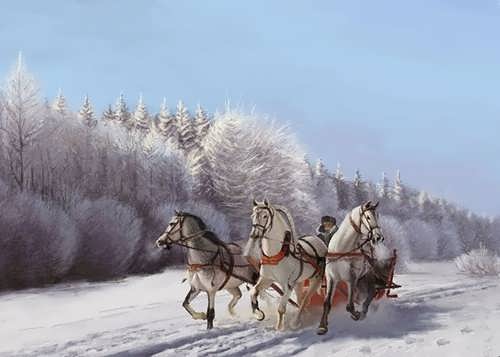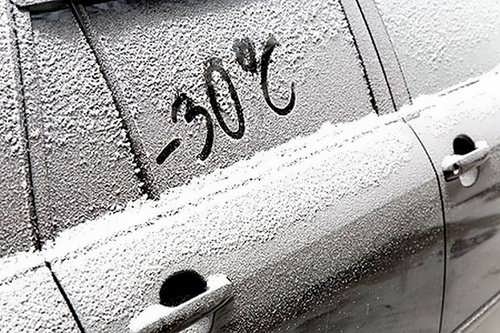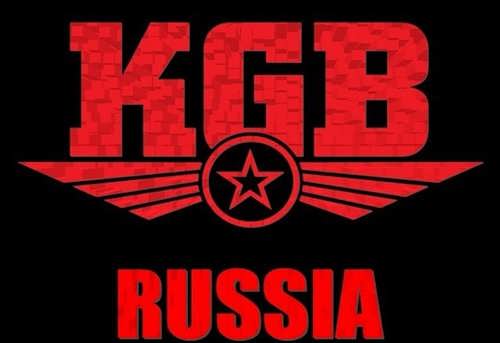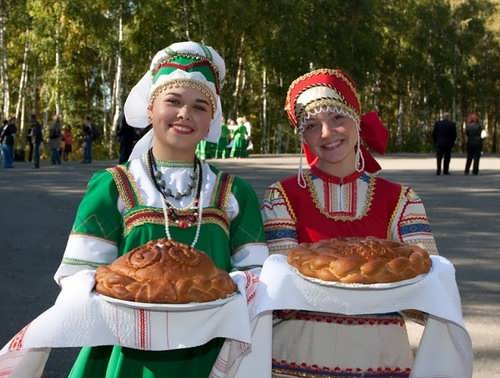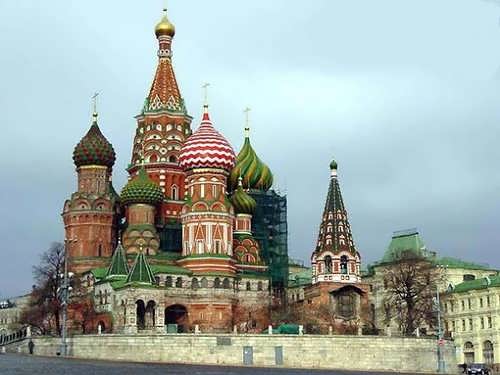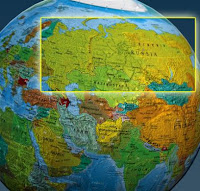Each state has its own symbols. As a rule, the most important of them is the flag and the coat of arms. I really love my country. Therefore, I have a special enthusiastic feeling for our flag and coat of arms. The national flag of the Russian Federation is a rectangular panel of three equal bands. The upper band is white, the middle is blue, and the lower is red. Now the meaning of these colors has changed. White color means peace, purity, purity, perfection. Blue is the color of faith, loyalty, and constancy. Red color symbolizes energy, strength, blood shed for the Fatherland. The white-blue-red flag was approved as the official (state) flag of Russia only on the eve of the coronation of Nicholas II in 1896. Prior to this, the state flag of the Russian Empire was considered a black-yellow-white flag. A white-blue-red flag since the time of Peter I was the trade flag of Russia. Then the red color meant statehood. Blue was the color of the Mother of God. It was under her protection that Russia was. The white color on the flag meant freedom, independence. The coat of arms is a very important symbol of the state. I believe that every person should know the arms of his country well. The state emblem of the Russian Federation depicts a golden two-headed eagle. It is located on the shield. Above the eagle are three crowns. Above the heads are two small ones, and above them there is another, big one. These are the three historical crowns of Peter the Great. In his paws, the eagle holds a scepter and a power. On the chest of the eagle on the red shield we see a rider. He hits the dragon with a spear. The coat of arms of our country is historical. The eagle was depicted on the monuments of the era of Peter the Great. The three crowns depicted above the heads of the eagle stand for the independence of all of Russia. In claws the eagle holds a scepter and a power. They mean state power and a single state. The horseman, striking with the spear of the dragon, speaks of the struggle between good and evil, light and darkness. This means that Russian citizens are always ready to defend their country. I am very proud of my homeland. Therefore, I really like our flag and coat of arms. They make me proud of my country! ПЕРЕВОД. Каждое государство имеет свои символы. Как правило, самые важные из них – это флаг и герб. Я очень люблю свою страну. Поэтому испытываю особенное восторженное чувство к нашему флагу и гербу. Государственный флаг Российской Федерации представляет собой прямоугольное полотнище из трех равных полос. Верхняя полоса белого цвета, средняя – синего, а нижняя – красного. Сейчас значение этих цветов поменялась. Белый цвет означает мир, чистоту, непорочность, совершенство. Синий – это цвет веры, верности, постоянства. Красный цвет символизирует энергию, силу, кровь, пролитую за Отечество. Бело-сине-красный флаг был утвержден как официальный (государственный) флаг России только накануне коронации Николая II в 1896 году. До этого государственным флагом Российской империи считался черно-желто-белый флаг. А бело-сине-красный флаг со времен Петра I был торговым флагом России. Тогда красный цвет означал державность. Синий был цветом Богоматери. Именно под ее покровительством находилась Россия. Белый цвет на флаге означал свободу, независимость. Герб – это очень важный символ государства. Я считаю, что каждый человек должен хорошо знать герб своей страны. На государственном гербе Российской Федерации изображен золотой двуглавый орел. Он расположен на щите. Над орлом находятся три короны. Над головами – две малые, а над ними – еще одна, большая. Это три исторические короны Петра Великого. В своих лапах орел держит скипетр и державу. На груди орла на красном щите мы видим всадника. Он поражает копьем дракона. Герб нашей страны исторический. Орел изображался еще на памятниках эпохи Петра Великого. Изображенные над головами орла три короны обозначают независимость всей России. В лапах орел держит скипетр и державу. Они означают государственную власть и единое государство. Всадник, поражающий копьем дракона говорит о борьбе добра со злом, света с тьмой. Это означает, что граждане России всегда готовы защищать свою страну. Я очень горжусь своей родиной. Поэтому наш флаг и герб мне очень нравятся. Они вызывают у меня гордость за свою страну!
Светило науки — 9927 ответов — 180294 помощи
Национальные символы Российской Федерации: Бело-синe-красный флаг,
Двуглавый орел и Государственный гимн.
The official symbols of the Russian Federation are: a white-blue-red banner,
a double-headed eagle and a national anthem.
But the is a number of unofficial symbols too:
1 Bear – they say a global warming can change Russian climate, but the stereotype of a bear on Red Square will never change. The bear symbolizes the Russian policy too.
2.
Matryoshka — first wooden doll
with a secret. But at the same time, no one disputes: matryoshka is associated
only with Russia.
3. Vodka — a drink (of 40 degrees alkohol) — an
indispensable element of foreign short stories about Russia. Russian vodka
became legendary first «there», and only then «here in
Russia». Honey Braga and other local alcohol drinks
could not compete with it.
4. Hat
with-ear-flaps is seriously believed that the «hat
ears» as it is written in foreign guidebooks, they say the Russians treat it
as the Scots treat their kilts.
5. Samovar — an enormous size kettle with a tube in the twenty-first century is not
separated from the Russian way of life.
6. Balalaika -«All
Russians play the balalaika» these words correspond to the foreign notions
of musical taste in Russia. It is pointless to argue, because they think
that today even rock-n-roll is played on the Russian balalaika.
7. Spasskaya
tower is an architectural symbol of Russia — it is a
synonym of Supreme power, and a reminder of popular superstitions: With the
first chiming it is customary to make a wish, with the last — to celebrate the
New year.
8. The
birch tree — actually grows everywhere. But only in
our history birch is a lyrical hero in poetry and prose, a bath broom, and
dance ensemble — a symbol of advanced Soviet art.
9. Troika — «Bird-Troika — Rus» is taught in our
school, and for foreigners it is also one of the unofficial symbols of
Russia.
Symbols of Russia — official and non-official
The national symbols of Russia are a part of the cultural heritage of the country which has given the country its national identity.
The official and non-official symbols play an important role in formation of a country and a nation’s image; they build up its recognition.
Symbols of Russia and Russians are quite diverse. There are only three official, i.e. authorized by law, symbols of the state — the flag, emblem and anthem. But there are a lot of informal symbols, which are often much more famous and popular.
I’d like to tell you about these symbols of Russia. At first official symbols:
1. National Flag of Russia
The national flag of Russia is a tri color flag-white color which lies on the top, blue in the middle and red on the bottom. White stands for nobility and frankness; blue symbolizes loyalty, honesty, chastity and scarlet represents self-sacrifice, generosity and love. While some Russians believe that red means the land, blue stands for sky, and white symbolizes heaven.
The current Russian flag was adopted on August 21, 1991 just before the country became an independent state. Most historians trace the origin of Russia’s flag to Peter the Great. In 1699, out of hundreds of different flags, Peter selected the flag similar to the flag of the Netherlands — white, blue and red flag. His design was used as a Russian maritime flag for merchant ships and then it was adopted as the civil flag of Russia in 1883.
2. Two-headed Eagle
The two-headed eagle first appeared in Russia, during the time of Moscovia, in the 15th century. Two-headed eagle has been the symbol of the monarchy of Russia for more than four hundred years. But with the advent of Russian revolution and dethroning of the Tsar Empire, it was on the verge of extinction. In 1993, under the initiative of President Boris Yeltsin it was again adopted on 30th November 1993.
The two heads of the eagle stands for the two parts of vast Russian empire — European and Asian, which are believed to be an important part of the country of Russia.
There are three historical crowns of Peter the Great above the two-headed eagle (they are symbols of the sovereignty both in Russia as a whole and in its parts). The eagle holds in claws sceptre and orb as embodiment of State power and united state.
On its chest there is a horseman – Russian St. George – who is killing an evil snake with his spear. That is one of the oldest symbols of victory of Russia against all its enemies, symbol of the struggle of good against evil, light against gloom.
3. National Anthem of Russia
For a long time Russia had no anthem. The various church hymns and military marches were used to honour the Russia up to 1816, when the “Молитва русских“ («Prayer of the Russians») by Russian poet V. Zhukovskii was chosen as the national anthem.
The second official anthem “Боже, царя храни“ was presented in 1833, on December 25th , when the nation celebrated the expulsion of the French from Russia. That anthem existed until the October revolution of 1917 and was replaced to the new anthem of the victorious proletarian revolution — «International» — in 1918.
In 1944, the national anthem of Russia was accepted. The music was composed by Alexander Alexandrov and the lyrics were written by Russian Federalist Sergey Mikhalkov.
After the collapse of the Soviet Union, in 1993, a government commission and President Yeltsin offered a new national anthem “Патриотическая песня“ («Patriotic Song») by M. Glinka. However this anthem was unpopular and didn’t inspire Russians. People preferred the old Soviet anthem instead of it.
Symbols of Russia — official and non-official
1st stanza:
Russia, our holy country!
Russia, our beloved country!
A mighty will, a great glory,
Are your inheritance for all time!
Refrain:
Be glorious, our free Fatherland!
Eternal union of fraternal peoples,
Common wisdom given by our forebears,
Be glorious, our country! We are proud of you!
2nd stanza:
From the southern seas to the polar region
Spread our forests and fields.
You are unique in the world, inimitable,
Native land protected by God!
3rd stanza:
Wide spaces for dreams and for living
Are opened for us by the coming years
Faithfulness to our country gives us strength
Thus it was, so it is and always will be!
Foreigners have many stereotypes about Russian life.
The stereotypical understanding is that Russia is a faraway, snowy country, where one must wear a furcoat and valenki (felt boots), people do nothing but drink vodka and play balalaikas, while bears are leaving their forest homes to go walking down village streets. However, the reality of our life is very far from this idyllic myth: balalaikas, bears, and felt boots have more or less become symbols of Russia rather than attributes of everyday life.
Non-official symbols of Russia
MATRESHKA
Matryoshka is the most famous symbol of Russia and the most popular Russian souvenir all around the World. It is a set of wooden dolls nested into each other. The painted image on them is most often a woman wearing traditional Russian costume decorated with flowers and patterns. It seems that the matryoshka has come to us from the antic world of legends and fairy tales, though in reality the wooden doll is only about hundred years in existence.
Matryoshka was first made in Russia at the end of the 19th century (precisely in the 1880s), when Russia was experiencing a rising sense of culture and national identity. The industrialist and patron of the arts, Savva Mamontov, established a Children’s Education workshop where Russian folk craftsmen produced a variety of folk-art style toys for children and developed the idea of the creation of a new Russian style. Once somebody has brought a funny Japanese figurine of a bald-headed old man Fukuruma, which consisted of seven other figurines nestled one another. It was made on the island of Honshu, Japan in the late 1800s by an unknown Russian monk.
With the arrival of the Russian-Japanese «Fukuruma» the craftman V. Zvezdochkin and artist S.Maliutin were inspired to create a new Russian folk art doll — matryoshka. In April of 1900, matryoshka was represented at the World fair in Paris, where it won the bronze medal and worldwide fame.
The name «matryoshka» comes from the Russian word for “mother” — «мать» (the Latin root “mater “- mother). Matryoshka has come to mean “little mother” based on the idea that the largest doll holds her babies inside like an expectant mother and that each daughter in turn becomes a mother. So matryoshka is a symbol of motherhood and it has a modified egg shape.
VALENKI
Valenki, or felt boots, are Russian national footwear. They are traditionally made of milled fleece, and each pair requires at least a kilogram of fleece that must undergo a long processing treatment. It must be combed out, made into thin strips of felt, shaped, boiled, and dried out. In the old times, the centre for valenki production was Ouglich, a small city in the Upper Volga area; currently, this footwear is made all over Russia. In the 18th century, felt boots were an expensive, luxury gift: Peter the First and Catherine the Great ordered specially made valenki for their personal wardrobes. Soviet leaders such as Lenin, Stalin, Khrushchyov, and Marshall Zhukov also appreciated valenki. Today, valenki are still irreplaceable as footwear in the countryside and in the army: felt can resist –40 °C (–40 °F) freeze and protect the soldiers’ feet in combat.
BALALAIKA
The balalaika is a plucking string instrument that resembles a guitar, but has a triangular shape and only three strings (or two in some cases). Today the balalaika has disappeared from Russians’ everyday life almost completely. There aren’t many people left who can play it – not to mention, only professional musicians in Russian folk music ensembles.
The first mention of the term «balalaika» was in a Russian document from 1688 — balalaika was used by Russian peasants, skomorohki, or wandering minstrels. It existed in various forms with triangular and oval bodies, differing numbers of strings, and movable tied-on string frets, and was mainly used for playing dance tunes. The modern variant of instrument — standardized, three-string chromatic triangular-bodied balalaika with fixed metal frets and other innovations — was created back in 1880 by Vasilii Andreev.
SAMOVAR
The Russian word samovar literally means “self-boiling.” The vessel consists of a metal container for boiling the water and a fire-pan with a tube. Samovars appeared in Russia in the second quarter of the 18th century and, in the course of one hundred years, became an integral part of every Russian household, restaurant, or hotel. The samovar had both a practical and an emotional function: it became a unifying symbol for people when they gathered to have tea parties and provided the right atmosphere for friendly conversation. Though samovars first appeared in the Urals, the production of samovars blossomed in Tula, an old city to the south of Moscow, also famous for its armories and spice-cakes.
Today Russians still use the samovar, but mostly as an attribute of exotics and nostalgia. Though samovars are no more an integral part of modern life in Russia, they remain a symbol of family’s warmth and cozyness, cordial get-togethers and traditional festivities
FUR HATS
A winter hat with ear-flaps and warm covering for the back of the head can protect one against the severe Russian cold. In the past, only peasants would wear such hats — they called them the “three-eared hats.” In 1940, the Red Army substituted winter helmets with earflap hats, and since then the hats have become popular among civilians, men as well as women. Most foreigners buy black and gray military hats with faux fur, but the Russians prefer ear-flap hats of expensive natural fur: mink, nutria, muskrat, or fox. During the Soviet times, such hats were difficult to find, and state officials would wear fur trim of quality depending on their rank.
RUSSIAN BEAR
One of Russias’ favorite animals is the bear, a hero of many legends and fairytales. Russians tenderly give bears the human name of Misha (sometimes adding a patronymic name out of respect — hence, Mikhail Potapych). They also apply bear-like qualities to people; a clumsy but kind person is referred to as a “bear.” The little bear cub was chosen to be Russia’s mascot in the 22nd Olympic Games held in Moscow in 1980. Bears live throughout Russia, and there are two main kinds: brown bears that are forest dwellers (the bear in those areas is also nicknamed the “chief of the taiga”), and white bears that dwell in polar areas. The popular foreign stereotypes notwithstanding, you will not see bears roaming the streets of towns and cities.
The bear has long been associated with Russia. Some western explorer discovering Russia about six centuries ago wrote of some remote town full of bears roaming the streets, and the barbaric Russian “medved’” firmly gripped Western’s imagination.
So the Russian bear clich? stepped in from the West, and since the 18th century it has been mainly a derogatory image of Russian emperors (and then other Russian leaders) in Western political cartoons and caricatures. It should reflect barbarity and aggression of Russia. But we, Russian like our bears!
GRANDFATHER FROST AND THE SNOW MAIDEN
Ded Moroz (Grandfather Frost) is a fairytale character who brings New Year’s and Christmas gifts to children every year. He is a big and stately older man with a deep voice, dressed in felt boots, a fur cap, and a coat that reaches to his heels. He either puts the gifts under the tree or hands them out to children himself: in this way, he is different from Santa Claus who leaves the gifts in Christmas stockings. The Russian Grandfather Frost has a granddaughter, Snegurochka (the Snow Maiden), who comes with him to wish children a happy New Year. The homeland of Grandfather Frost is Veliky Oustyug, an old town in the Vologda Region.
TROIKA
The troika is a Russian traditional triple harness, which connects the horses to sleighs, carts, or covered wagons. This troika ride has been recognized as the most spirited, fun, and fastest way to travel, and the sensations that it evokes are in tune with the Russian personality and spirit. Nikolai Gogol coined the famous phrase: “What kind of Russian man doesn’t like a spin?” The troika has become one of the most famous symbols of Russia, not to mention a favourite winter entertainment for tourists.
FROST
Russia is the coldest country in the world, where winter lasts for four to five months throughout the larger part of its territory, about seven months in Central Siberia, and ten months in the transpolar areas. It is in Russia, in the Republic of Sakha (Yakutia), where the northern hemisphere’s coldest point is located: the mercury can go down to –72 °C (–97.6 °F) there. Severe frost can also be felt in Moscow, where a record low temperature of –42 °C (–43.6 °F) was recorded in the winter of 1942. The Russians are used to frosty weather, enjoying winter sports and festivities such as skiing, skating, and sledding. However, the severe climate does create many problems in everyday life. Buildings must be built with very thick walls to insulate them for effective heating and protection from the cold, roads must be clear from ice and snow. All of this requires money and effort, not to mention the extra warm clothing and footwear that one needs to survive the winter months.
ROADS
Life in Russia depended on roads since the old days. Many fairy tales are based on journeys; legends tell of hermits, pilgrims, and wanderers whom one can meet along the way. At the same time, Russians themselves often criticize their roads. As early as the 19th century, Nikolai Gogol, the famous writer, noted that “Russia’s two biggest problems are fools and roads.” Russians still use the word “road” for any type of terrain that they drive through, paved or not. Our immense country has many places where there are no people, much less roads. However, the developed areas have undergone many changes in recent years: roads are either built or are being built, though, given the enormous distances between places, building roads is no easy task. One can still wait for a letter to get from one place in Russia to another for many weeks; even express mail cannot work as fast as it does in other places.
VODKA
Yes, vodka is the most well-known of Russian alcohol.
Yes, most Russians prefer their traditional national vodka than other alcohol (like Mexicans like tequila and Germans love their schnapps).
Yes, a lot of Russians do like vodka BUT not everyone. Many women and some men can’t stand vodka (including myself!)
Yes, Russians drink vodka BUT not every day – just on occasion (birthday, holiday, wedding, etc.). I was in many different countries and honestly, Russians don’t drink any more than the common Canadians/Americans, French or Germans. They drink just different products of alcohol.
When and where was vodka invented?
According to one of the legends, the monks of Moscow’s monastery were the first who started producing Russian vodka. After their visit to Constantinople where they tasted grape spirit, they started making the first ever hooch. As there were no grapes growing in their land the spirit was made of grain. They called this drink “aqua vitae” (Latin for “water of life” ). It was a prototype of the present-day vodka. The word vodka was derived from the word “voda” (meaning water).It by no means that Russians drink more vodka than water. And the whole myth of vodka being cheaper than water is also nonsense.
KGB
According to the popular stereotypes, after meeting the bears roaming the streets, a foreigner should be escorted by (as minimum) two KGB agents. Ridiculous.
During the Cold War, the KGB (the Russian abbreviation for Committee for State Security) had success recruiting agents in the United States and Britain who were known to support communism or belong to communist organizations. Since that time, the KGB-monster, “the root of all evil”, still scares Western people. Today Western mass-media created a new face of the Russian monster; it became the ex-president of Russia V. Putin who worked for the KGB in the past.
BREAD-SALT
“Khleb-sol” («bread-salt”) is the most famous symbols of Russian hospitality and the oldest cultural tradition of welcoming a visitor with a round loaf with a salt cellar on top. Bread and salt represent the giver’s wish that the recipient’s pantry will always be full.
Bread symbolizes key aspects of the national self-image.
ARCHITECTURE
A special place among the cultural symbols of Russian is occupied by its architectural monuments. The development of Russian culture is inseparably linked with religious tradition. Churches, cathedrals and monasteries constructed in different centuries reflect spirituality of Russia. The well-known around the world such cultural symbol of Russia as Basil’s Cathedral in the centre of Moscow.
BALLET
One of the most important cultural symbols of Russia is Russian school of classical ballet which is considered to be the best in the world. Classical ballet came into Russia in the 18th century. By the end of the 19th century the national school of ballet had finally formed. The world-known names of Russian ballet dancers are Anna Pavlova, Galina Ulanova, Maya Plisetskaia, Michail Baryshnikov, Rudolf Nuriev and others.
1
Each state has its own symbols. As a rule, the most important of them is the flag and the coat of arms. I really love my country. Therefore, I have a special enthusiastic feeling for our flag and coat of arms. The national flag of the Russian Federation is a rectangular panel of three equal bands. The upper band is white, the middle is blue, and the lower is red. Now the meaning of these colors has changed. White color means peace, purity, purity, perfection. Blue is the color of faith, loyalty, and constancy. Red color symbolizes energy, strength, blood shed for the Fatherland. The white-blue-red flag was approved as the official (state) flag of Russia only on the eve of the coronation of Nicholas II in 1896. Prior to this, the state flag of the Russian Empire was considered a black-yellow-white flag. A white-blue-red flag since the time of Peter I was the trade flag of Russia. Then the red color meant statehood. Blue was the color of the Mother of God. It was under her protection that Russia was. The white color on the flag meant freedom, independence. The coat of arms is a very important symbol of the state. I believe that every person should know the arms of his country well. The state emblem of the Russian Federation depicts a golden two-headed eagle. It is located on the shield. Above the eagle are three crowns. Above the heads are two small ones, and above them there is another, big one. These are the three historical crowns of Peter the Great. In his paws, the eagle holds a scepter and a power. On the chest of the eagle on the red shield we see a rider. He hits the dragon with a spear. The coat of arms of our country is historical. The eagle was depicted on the monuments of the era of Peter the Great. The three crowns depicted above the heads of the eagle stand for the independence of all of Russia. In claws the eagle holds a scepter and a power. They mean state power and a single state. The horseman, striking with the spear of the dragon, speaks of the struggle between good and evil, light and darkness. This means that Russian citizens are always ready to defend their country. I am very proud of my homeland. Therefore, I really like our flag and coat of arms. They make me proud of my country! ПЕРЕВОД………..Каждое государство имеет свои символы. Как правило, самые важные из них – это флаг и герб. Я очень люблю свою страну. Поэтому испытываю особенное восторженное чувство к нашему флагу и гербу. Государственный флаг Российской Федерации представляет собой прямоугольное полотнище из трех равных полос. Верхняя полоса белого цвета, средняя – синего, а нижняя – красного. Сейчас значение этих цветов поменялась. Белый цвет означает мир, чистоту, непорочность, совершенство. Синий – это цвет веры, верности, постоянства. Красный цвет символизирует энергию, силу, кровь, пролитую за Отечество. Бело-сине-красный флаг был утвержден как официальный (государственный) флаг России только накануне коронации Николая II в 1896 году. До этого государственным флагом Российской империи считался черно-желто-белый флаг. А бело-сине-красный флаг со времен Петра I был торговым флагом России. Тогда красный цвет означал державность. Синий был цветом Богоматери. Именно под ее покровительством находилась Россия. Белый цвет на флаге означал свободу, независимость. Герб – это очень важный символ государства. Я считаю, что каждый человек должен хорошо знать герб своей страны. На государственном гербе Российской Федерации изображен золотой двуглавый орел. Он расположен на щите. Над орлом находятся три короны. Над головами – две малые, а над ними – еще одна, большая. Это три исторические короны Петра Великого. В своих лапах орел держит скипетр и державу. На груди орла на красном щите мы видим всадника. Он поражает копьем дракона. Герб нашей страны исторический. Орел изображался еще на памятниках эпохи Петра Великого. Изображенные над головами орла три короны обозначают независимость всей России. В лапах орел держит скипетр и державу. Они означают государственную власть и единое государство. Всадник, поражающий копьем дракона говорит о борьбе добра со злом, света с тьмой. Это означает, что граждане России всегда готовы защищать свою страну. Я очень горжусь своей родиной. Поэтому наш флаг и герб мне очень нравятся. Они вызывают у меня гордость за свою страну!
Представлено сочинение на английском языке Флаг России/ Flag of Russian Federation с переводом на русский язык.
| Flag of Russian Federation | Флаг России |
| Flag is the country’s main symbol as well as the anthem and coat of arms. The flag of Russia consists of three stripes – white, blue and red. There is no official version of what the colours mean but some people believe that the white colour stands for generosity, blue for loyalty, and red for courage. Another symbolism is: white represents God that is at the top, red is peasants at the bottom, and blue is a tsar which is between the two. | Флаг – главный символ страны наряду с гимном и гербом. Флаг России состоит из трех полос – белой, синей и красной. Нет официальной версии, что именно означают цвета, но некоторые говоря, что белый – символ щедрости, синий – преданности, а красный – отваги. Другой вариант: белый представляет Бога, на самом верху, красный – крестьян, внизу, а синий – это царь, который находится между ними. |
| The history of the flag comes from the 1697 when Tsar Peter I visited the Netherlands. He liked the simple design of Dutch flag and used the same colours for the Russian flag. In 1917 in the period of October revolution, the flag was changed for the Red Flag that contained a gold hammer, sickle, and gold-bordered red star. It was the official flag of the Soviet Union. But later on August 21, 1991 the original white-blue-red Russian national flag was restored. | История флага началась в 1967 году, когда царь Петр I посетил Нидерланды. Ему понравился простой дизайн нидерландского флага, и он использовал такие же цвета для российского флага. В 1917 году в период Октябрьской революции, флаг сменили на Красный Флаг, состоявший из золотого молота, серпа и красной звезды с золотым контуром. Это был официальный флаг Советского Союза. Но позже, 21 августа 1991 года, был восстановлен оригинальный бело-сине-красный флаг. |
| In 1994 the National Flag Day was established in Russia. It is celebrated on 22 August, but people work on this day. The flag is also raised on every national holiday. | В 1994 году был установлен Национальный День Флага. Его отмечают 22го августа, но люди работают в этот день. Флаг поднимают в день каждого государственного праздника. |
Обновлено: 11.03.2023
Each state has its own symbols. As a rule, the most important of them is the flag and the coat of arms. I really love my country. Therefore, I have a special enthusiastic feeling for our flag and coat of arms. The national flag of the Russian Federation is a rectangular panel of three equal bands. The upper band is white, the middle is blue, and the lower is red. Now the meaning of these colors has changed. White color means peace, purity, purity, perfection. Blue is the color of faith, loyalty, and constancy. Red color symbolizes energy, strength, blood shed for the Fatherland. The white-blue-red flag was approved as the official (state) flag of Russia only on the eve of the coronation of Nicholas II in 1896. Prior to this, the state flag of the Russian Empire was considered a black-yellow-white flag. A white-blue-red flag since the time of Peter I was the trade flag of Russia. Then the red color meant statehood. Blue was the color of the Mother of God. It was under her protection that Russia was. The white color on the flag meant freedom, independence. The coat of arms is a very important symbol of the state. I believe that every person should know the arms of his country well. The state emblem of the Russian Federation depicts a golden two-headed eagle. It is located on the shield. Above the eagle are three crowns. Above the heads are two small ones, and above them there is another, big one. These are the three historical crowns of Peter the Great. In his paws, the eagle holds a scepter and a power. On the chest of the eagle on the red shield we see a rider. He hits the dragon with a spear. The coat of arms of our country is historical. The eagle was depicted on the monuments of the era of Peter the Great. The three crowns depicted above the heads of the eagle stand for the independence of all of Russia. In claws the eagle holds a scepter and a power. They mean state power and a single state. The horseman, striking with the spear of the dragon, speaks of the struggle between good and evil, light and darkness. This means that Russian citizens are always ready to defend their country. I am very proud of my homeland. Therefore, I really like our flag and coat of arms. They make me proud of my country! ПЕРЕВОД. Каждое государство имеет свои символы. Как правило, самые важные из них – это флаг и герб. Я очень люблю свою страну. Поэтому испытываю особенное восторженное чувство к нашему флагу и гербу. Государственный флаг Российской Федерации представляет собой прямоугольное полотнище из трех равных полос. Верхняя полоса белого цвета, средняя – синего, а нижняя – красного. Сейчас значение этих цветов поменялась. Белый цвет означает мир, чистоту, непорочность, совершенство. Синий – это цвет веры, верности, постоянства. Красный цвет символизирует энергию, силу, кровь, пролитую за Отечество. Бело-сине-красный флаг был утвержден как официальный (государственный) флаг России только накануне коронации Николая II в 1896 году. До этого государственным флагом Российской империи считался черно-желто-белый флаг. А бело-сине-красный флаг со времен Петра I был торговым флагом России. Тогда красный цвет означал державность. Синий был цветом Богоматери. Именно под ее покровительством находилась Россия. Белый цвет на флаге означал свободу, независимость. Герб – это очень важный символ государства. Я считаю, что каждый человек должен хорошо знать герб своей страны. На государственном гербе Российской Федерации изображен золотой двуглавый орел. Он расположен на щите. Над орлом находятся три короны. Над головами – две малые, а над ними – еще одна, большая. Это три исторические короны Петра Великого. В своих лапах орел держит скипетр и державу. На груди орла на красном щите мы видим всадника. Он поражает копьем дракона. Герб нашей страны исторический. Орел изображался еще на памятниках эпохи Петра Великого. Изображенные над головами орла три короны обозначают независимость всей России. В лапах орел держит скипетр и державу. Они означают государственную власть и единое государство. Всадник, поражающий копьем дракона говорит о борьбе добра со злом, света с тьмой. Это означает, что граждане России всегда готовы защищать свою страну. Я очень горжусь своей родиной. Поэтому наш флаг и герб мне очень нравятся. Они вызывают у меня гордость за свою страну!
Русский национальный костюм родился в 12-13 веках, и до 18 века его носили почти все слои русского общества — цари и бояре, купцы, р.
Символы – официальные и неофициальные, пропагандистско-стререотипные и лингво-культурные — играют важную роль в формиров.
My dear friends, Sorry, my computer was broken and I couldn’t post the new topics last two months. Дорогие мои друзья, К сожалению, мой .
The Pancake Day — Maslenitsa — February 27 till the beginning of March Масл е ницу называют также Масл я ной неделей ил.
The Russian 1970s was a period of the intensive flowering of both the children’s films and children’s song. The eminent profession.
Русские люди обычно едят три раза в день: утром, до работы – завтрак, потом днём, в 1-3 часа — обед и вечером, после работы — ужин.
Мне часто задают один и тот же вопрос: почему русские не улыбаются, почему они всегда безрадостные или сердитые? Честно говоря, этот вопро.
Blog Archive
Followers
Saturday, 5 March 2011
Symbols of Russia — Символы России
Символы – официальные и неофициальные, пропагандистско-стререотипные и лингво-культурные — играют важную роль в формировании имиджа страны и нации и повышают их узнаваемость.
The official and non-official, propagandistic –and- stereotyped, and linguistic — and — cultural symbols play an important role in formation of a country and a nation’s image; they build up its recognition.
Визуальная репрезентация государства и национальной культуры привлекает не только политологов, социологов и культурологов, но и обычных людей , которые, собственно, создают эти яркие, запоминающиеся символы-образы.
The visual representation of a state and of the national culture interests and attracts not only politicologists, sociologists and culturologists, but also for common people, like those who create these vivid memorable symbols and images.
Символы России и русских достаточно разнообразны. К официальным, т.е. утвержденным законом, символам государства относятся всего три — флаг, герб и гимн. Количество неофициальных, зачастую более известных и распространенных, гораздо больше, и их можно условно выделить в следующие группы:
Symbols of Russia and Russians are quite diverse . There are only three official, i.e. authorized by law , symbols of the state — the flag , emblem and anthem . The number of informal symbols , which are often much more famous and popular , could be divided into the following groups:
P ropagandistic- and- stereotyped symbols created by foreigners:
а) несущие социальные мифы и политические иллюзии (медведь, водка, КГБ, автомат Калашникова)
a ) they usually support the social myths and political illusions ( bear, vodka , KGB, Kalashnikov’s gun )

б) связанные с национально-повседневной культурой (матрешка, бабалайка, самовар, шапка-ушанка, тройка, etc.)
b ) they are associated with the national every day culture ( matryoshka, babalaika , samovar , a hat with ear- flaps , three-horse sled, etc. )
(For example, the word «тоска» could be traslated as “anguish” , “ sorrow” , “ grief «, but no one is correct)
After such propaganda brain-wash, it is not wonder that some foreigners still see Russia as a dangerous enemy and an “Empire of Evil”. (By the way, in my opinion, Russia is now second-place after Muslims for being “evil”, “all of them being terrorists”). The false judgement is actually very insulting (I speak for the Muslims as well). Others consider Russia a remote, snowed-up country full of bears and KGB where drunk Russians playing the balalaika amidst matryoshkas and samovars. It is hardly worth saying today that contemporary life in Russia has very little to do with any of that. What can I say? Never believe stereotypes! It’s much better to visit Russia and look at it with your own eyes.
Свидетельство и скидка на обучение каждому участнику
Зарегистрироваться 15–17 марта 2022 г.
- Поможем развить концентрацию и внимание с раннего возраста
- Повысим гибкость и раскованность в общении
Описание презентации по отдельным слайдам:
Official Symbols of Russia
The national flag of Russia is a tri color flag: white stands for nobility and frankness; blue symbolizes loyalty, honesty, nobility and red represents self-sacrifice, generosity and love.
Two-headed eagle is another official symbol of Russia. Two heads of the eagle stand for the two parts of vast Russian empire — European and Asian.
On its chest there is a horseman – Russian St. George – who is killing an evil snake with his spear. That is one of the oldest symbols of victory of Russia against all its enemies, symbol of the struggle of good against evil, light against gloom.
National Anthem of Russia
Matryoshka is the most famous symbol of Russia and the most popular Russian souvenir all around the world.
Valenki or felt boots are Russian national footwear.
Balalaika is a musical instrument. It resembles a guitar, but there are only three strings.
The Russian word Samovar literally means self-boiling. Nowadays it is a symbol of family warmth and cosiness.
Ushanka is a winter hat with ear-flaps. It can protect against the severe Russian cold.
One of Russia’s favourite animal is the bear, a hero of many fairy-tales and legends. Russians tenderly give bears the human name Misha or Mikhail Potapych.
The Russian birch tree — beryezka
Краткое описание документа:
Данная презентация является дополнительным материалом к теме «Russia — our beloved country». Презентация «Национальные символы России» состоит из следующих файлов: официальные символы — флаг, герб, гимн и национальные символы — березка, матрешка, балалайка и др.
- Поможем развить концентрацию и внимание с раннего возраста
- Повысим гибкость и раскованность в общении
- подготовка к ЕГЭ/ОГЭ и ВПР
- по всем предметам 1-11 классов
Курс повышения квалификации
Дистанционное обучение как современный формат преподавания
Курс повышения квалификации
Инструменты онлайн-обучения на примере программ Zoom, Skype, Microsoft Teams, Bandicam
- Курс добавлен 31.01.2022
- Сейчас обучается 29 человек из 18 регионов
Курс повышения квалификации
Специфика преподавания английского языка с учетом требований ФГОС
- Для учеников 1-11 классов и дошкольников
- Бесплатные сертификаты учителям и участникам
Дистанционные курсы для педагогов
Найдите материал к любому уроку, указав свой предмет (категорию), класс, учебник и тему:
5 612 273 материала в базе
- ЗП до 91 000 руб.
- Гибкий график
- Удаленная работа
Самые массовые международные дистанционные
Школьные Инфоконкурсы 2022
Свидетельство и скидка на обучение каждому участнику
Другие материалы
Вам будут интересны эти курсы:
Оставьте свой комментарий
- 05.03.2021 1409
- PPTX 1.3 мбайт
- 61 скачивание
- Оцените материал:
Настоящий материал опубликован пользователем Мовсесян Марета Аматуновна. Инфоурок является информационным посредником и предоставляет пользователям возможность размещать на сайте методические материалы. Всю ответственность за опубликованные материалы, содержащиеся в них сведения, а также за соблюдение авторских прав несут пользователи, загрузившие материал на сайт
Если Вы считаете, что материал нарушает авторские права либо по каким-то другим причинам должен быть удален с сайта, Вы можете оставить жалобу на материал.
Автор материала
40%
- Подготовка к ЕГЭ/ОГЭ и ВПР
- Для учеников 1-11 классов
Московский институт профессиональной
переподготовки и повышения
квалификации педагогов
Дистанционные курсы
для педагогов
663 курса от 690 рублей
Выбрать курс со скидкой
Выдаём документы
установленного образца!
Учителя о ЕГЭ: секреты успешной подготовки
Время чтения: 11 минут
Минтруд предложил упростить направление маткапитала на образование
Время чтения: 1 минута
Рособрнадзор предложил дать возможность детям из ДНР и ЛНР поступать в вузы без сдачи ЕГЭ
Время чтения: 1 минута
Новые курсы: преподавание блогинга и архитектуры, подготовка аспирантов и другие
Время чтения: 16 минут
Школы граничащих с Украиной районов Крыма досрочно уйдут на каникулы
Время чтения: 0 минут
ГИА для школьников, находящихся за рубежом, может стать дистанционным
Время чтения: 1 минута
Отчисленные за рубежом студенты смогут бесплатно учиться в России
Время чтения: 1 минута
Подарочные сертификаты
Ответственность за разрешение любых спорных моментов, касающихся самих материалов и их содержания, берут на себя пользователи, разместившие материал на сайте. Однако администрация сайта готова оказать всяческую поддержку в решении любых вопросов, связанных с работой и содержанием сайта. Если Вы заметили, что на данном сайте незаконно используются материалы, сообщите об этом администрации сайта через форму обратной связи.
Все материалы, размещенные на сайте, созданы авторами сайта либо размещены пользователями сайта и представлены на сайте исключительно для ознакомления. Авторские права на материалы принадлежат их законным авторам. Частичное или полное копирование материалов сайта без письменного разрешения администрации сайта запрещено! Мнение администрации может не совпадать с точкой зрения авторов.
Герб России — один из главных государственных символов России, наряду с флагом и гимном.
Государственный герб Российской Федерации представляет собой четырёхугольный, с закруглёнными нижними углами, заострённый в оконечности красный геральдический щит с золотым двуглавым орлом, поднявшим вверх распущенные крылья. Орёл увенчан двумя малыми коронами и — над ними — одной большой короной, соединёнными лентой. В правой лапе орла — скипетр, в левой — держава. На груди орла, в красном щите, — серебряный всадник в синем плаще на серебряном коне, поражающий серебряным копьём чёрного, опрокинутого навзничь и попранного конём дракона.
Coat of arms of Russia is one of the main symbols of State of Russia, along with the flag and the anthem.The State emblem of the Russian Federation is a rectangular, with rounded lower corners, pointy in the tip of the Red Heraldic Shield with a gold double-headed eagle, lifting up the dissolved wings. The Eagle is crowned with two small crowns and, above them is a large Crown, by the band. In the Eagle’s right claw is a scepter in his left hand-power. On the breast of the Eagle on the red shield is a silver rider in Blue Coat on a silver horse, striking silver spear black, inverted backwards and the law breached the Dragon horses.
Emblem of Russia — one of the main state symbols of Russia, along with the flag and the anthem.
State Emblem of the Russian Federation is a quadrangular, with rounded bottom corners, pointed at the tip of the red heraldic shield with a gold double-headed eagle spreading its wings upward. The eagle is crowned with two small crowns and — above them — a large crown, connected by a ribbon. In the right leg of an eagle — a scepter in the left — power. On the breast of the eagle, the red shield — silver rider in the blue cloak on a silver horse, striking silver spear black, inverted backward and downtrodden horse dragon.
Читайте также:
- Пульмонология это кратко и понятно самое важное
- Бумагопластика история возникновения кратко
- Популяция это в экологии кратко
- Порты японского моря кратко
- Интересные факты из жизни солженицына кратко
Муниципальное казенное общеобразовательное учреждение
Ливенская основная общеобразовательная школа
Project:
“The Russia symbols”
Teacher: Lyubov Alexandrovna
Student : form 7 Timofeev Maksim
and Chubynina Darya
Livenska school
2018Year
The Russia symbols.
Russia is well-known as the largest country in the world. Russian area covers a big part of Europe and Asia. Moscow, Saint Petersburg and Novosibirsk are the biggest cities. The Coat of arms is represented by the double-headed eagle with the mounted figure slaying the black dragon in the center of it. The black dragon can be a symbol of enemies. The Russian flag consists of three horizontal fields – white, blue and red.
The humid continental climate is prevalent on the most part of the area. There are seven public holidays. The biggest is New Year. People celebrate New Year on the 31st of December. They buy New Year trees and exchange gifts. The most known Christian holidays are Easter and Trinity Sunday. Speaking about the symbols of Russia I want to mention Matryoshka doll and the sickle and hummer. These symbols are very recognizable. The sickle and hammer is still widely seen in Russia.
It is the largest country in the world. It covers the total area over 17 million-sq. km. The Arctick Ocean in the north, the Black, Azov and Caspian Seas in the south; washes the country by the Bering sea, sea of Japan and Okhotsk in the east and in the west by the Baltic Sea. R is a land of long rivers and large lakes.
The largest of all Russia’s rivers is the Volga. This river is a major transport route from north to south and a source of hydroelectric energy. The three largest lakes in Russia are Baikal in South-Eastern Siberia and Ladoga and Onega in the Norhtern Russia.
Baikal is the world’s most ancient lake and the deepest one. It contains 1/5 of the world’s fresh water. The relief of Russia is mostly flat. R is located on two plains: the Great Russian plain and the Western Siberian plain. There are various types of climate on the territory of Russia. Russia is one of the coldest and most northern countries. Russia has symbols.
The State symbol of Russia is a three colored banner with three horizontal stripes: white, blue and red. The white stripe symbolizes the earth, the blue one-the sky, and the red one symbolizes liberty. A new National Emblem is a two-headed eagle, which is the most ancient symbol of Russia.
Символы России
Россия известна как самая большая страна в мире. Россия занимает большую часть Европы и Азии. Москва, Санкт-Петербург и Новосибирск — крупнейшие города. Герб представлен двуглавым орлом с установленной фигурой, убивающей черного дракона в центре его. Черный дракон может быть символом врагов. Русский флаг состоит из трех горизонтальных полей — белого, синего и красного.
Влажный континентальный климат распространен на большей части территории. Есть семь праздничных дней. Самым большим является Новый год. 31 декабря отмечают Новый год. Они покупают новогодние елки и обмениваются подарками. Самые известные христианские праздники — Пасха и Троица в воскресенье. Говоря о символах России, я хочу упомянуть куклу Матрешки, серп и хаммер. Эти символы очень узнаваемы. Серп и молот по-прежнему широко известны в России.
Это самая большая страна в мире. Он охватывает общую площадь более 17 миллионов кв. км. Океан Арктика на севере, Черное, Азовское и Каспийское моря на юге; омывает страну Беринговым морем, Японским морем и Охотском на востоке, а на западе — Балтийским морем. Россия — страна с длинными реками и большими озерами.
Самая большая из всех рек России — Волги. Эта река является крупным транспортным маршрутом с севера на юг и источником гидроэнергетики. Три крупнейших озера в России — Байкал в Юго-Восточной Сибири, Ладога и Онега в Северной России.
Байкал — самое древнее озеро в мире и самое глубокое. Он содержит 1/5 мировой пресной воды. Рельеф России в основном плоский. R расположен на двух равнинах: Большой Русской равнине и Западно-Сибирской равнине. На территории России существуют различные типы климата. Россия является одной из самых холодных и самых северных стран. Россия имеет символы.
Государственный символ России — это трехцветный баннер с тремя горизонтальными полосами: белый, синий и красный. Белая полоса символизирует землю, синюю — небо, а красный символизирует свободу.
Новый национальный герб — двуглавый орел, который является самым древним символом России.
Bibliography
1.Текст: http://znanija.com
2.Презентация: http:// uznayvse.ru
3.Картинки : http://Yandex.ru
Content
Cлайд: 1 The national symbols of Russia
Слайд: 2 The national symbols of Russia
Слайд: 3 The official symbols of Russia
Слайд: 4 The flag
Слайд: 5 The hymn
Слайд: 6 The national emblem
Слайд: 7 The unofficial symbols of Russia
Слайд: 8 birch tree
Слайд: 9 Red Square
Слайд: 10 Kremlin
Слайд: 11 Russian troika
Слайд: 12 bears
Слайд: 13 samovars
Слайд: 14 balalaika
Слайд: 15 …
Слайд: 16 Thanks for you attention

